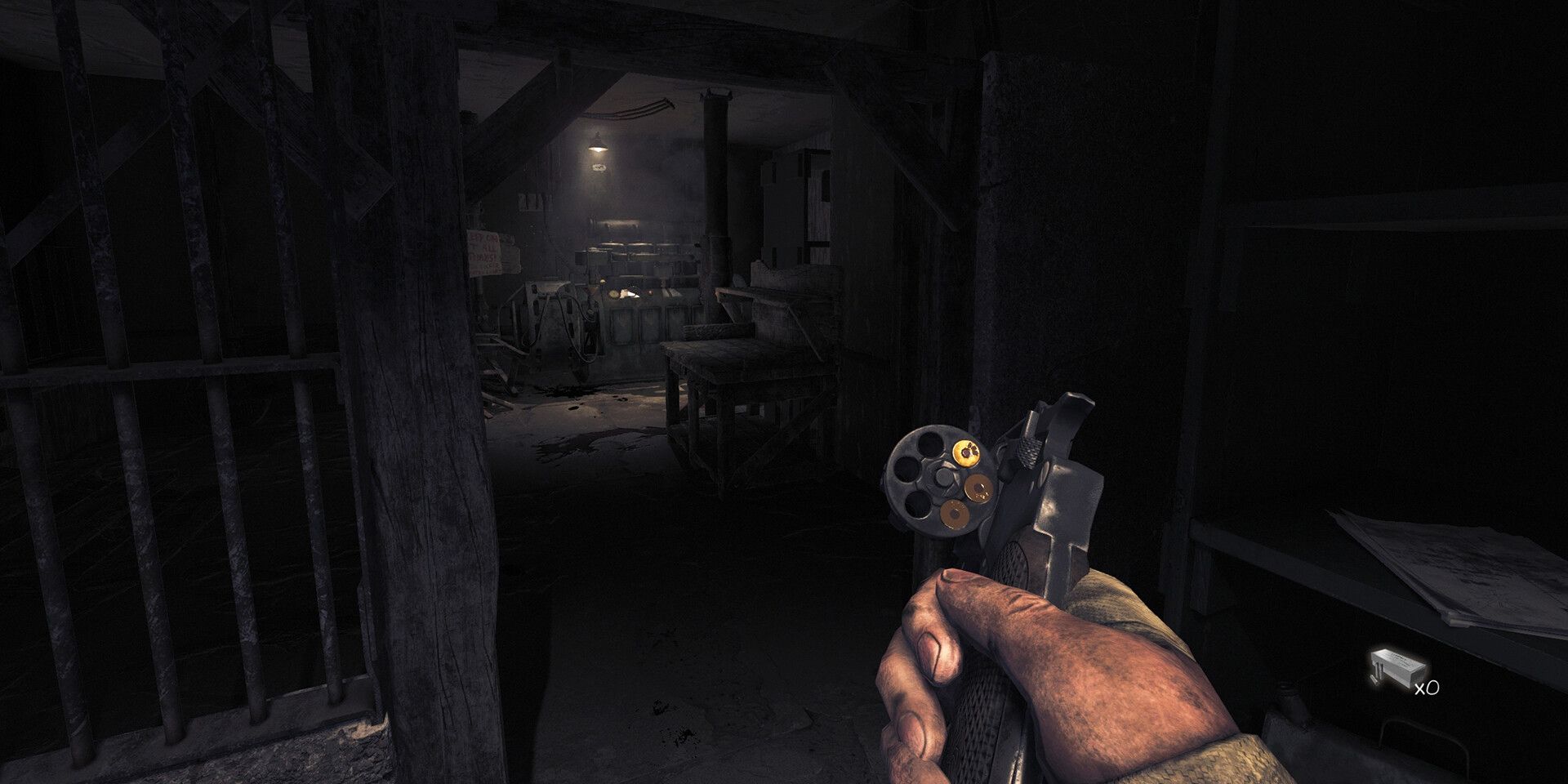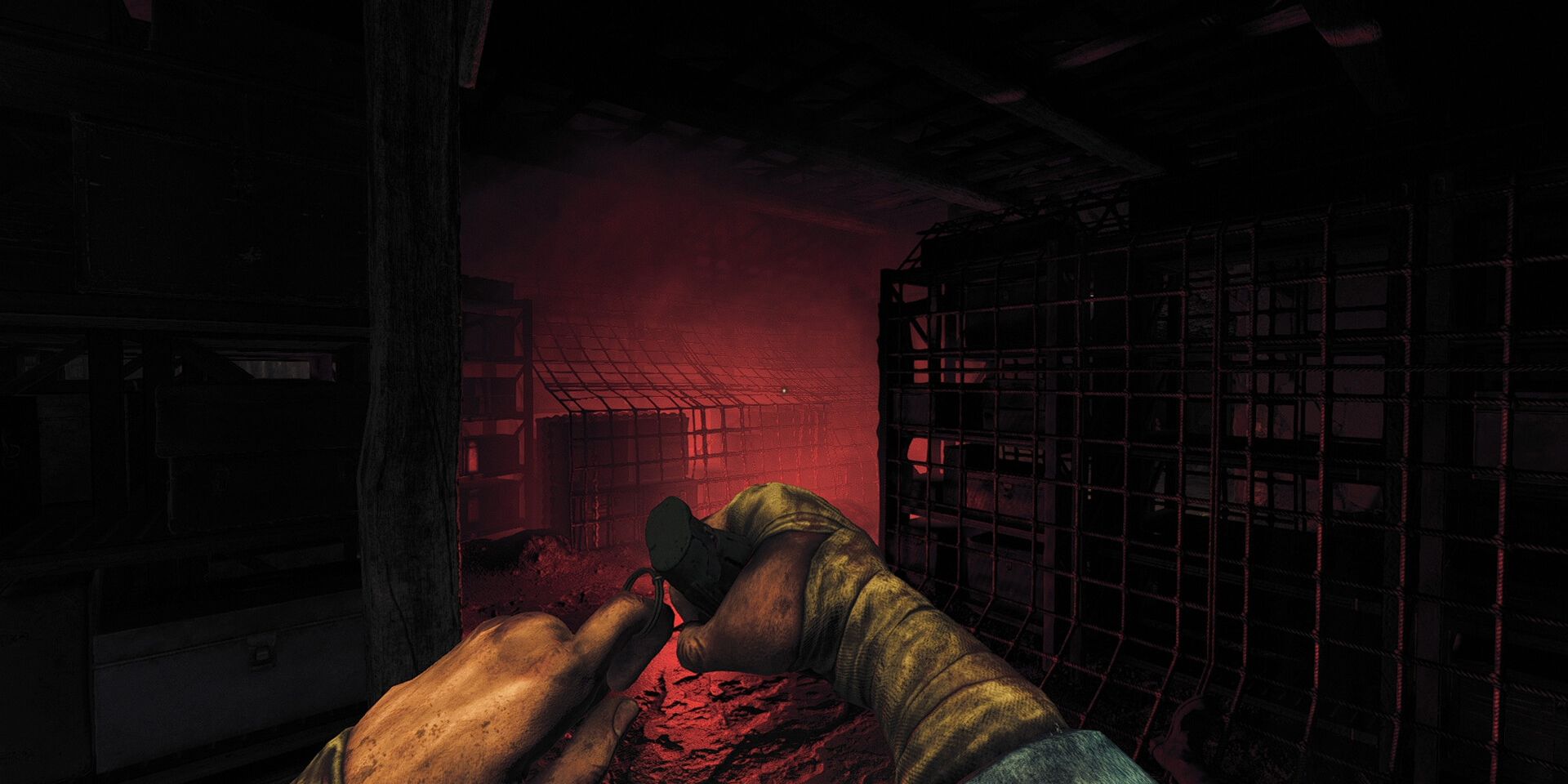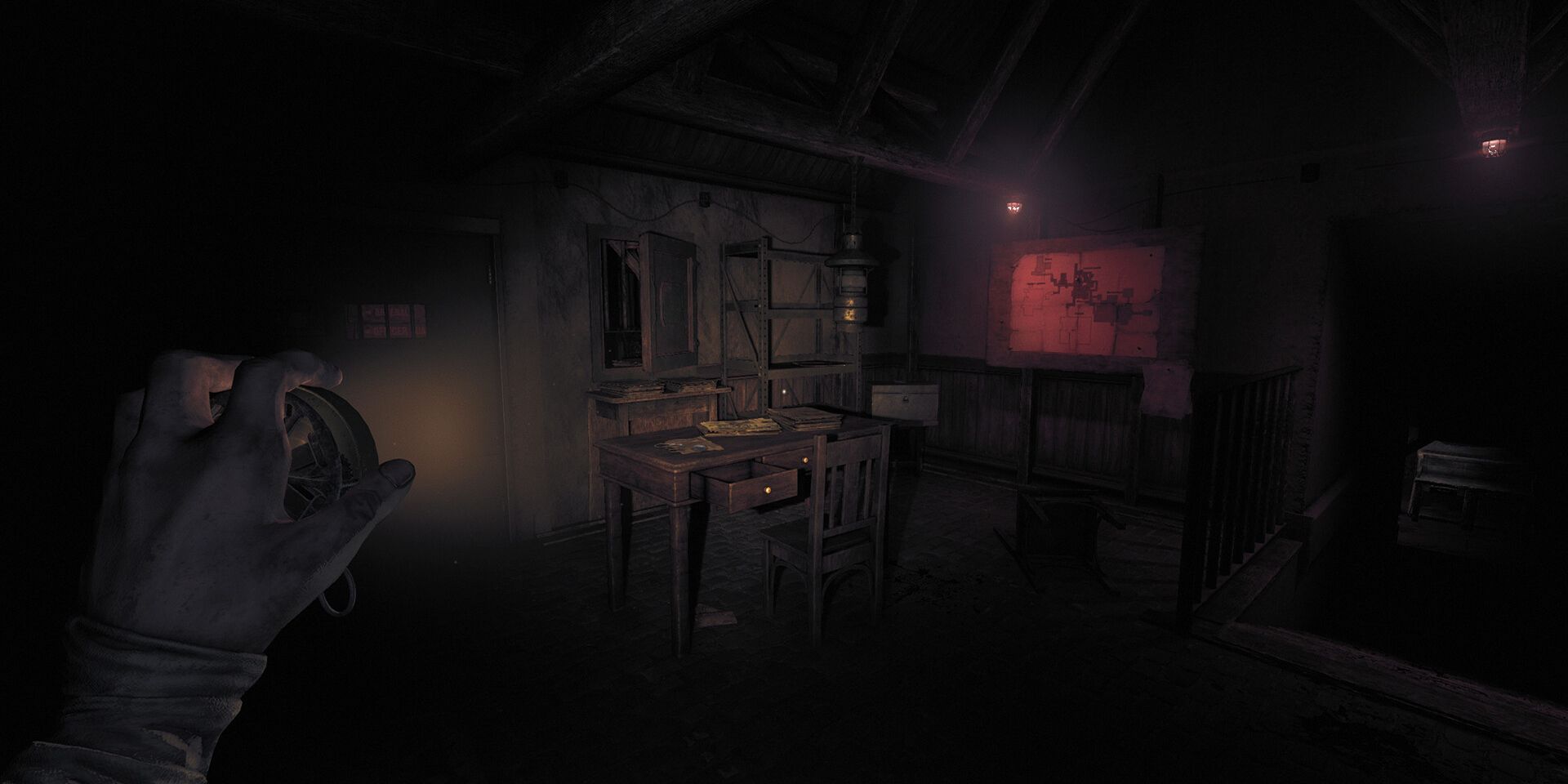Ever-depleting resources, inky darkness that chips away at your sanity, and unspeakable horrors chasing you through clammy crepuscular corridors; these have been the hallmarks of the Amnesia series ever since it single-handedly revolutionised video game horror with The Dark Descent back in 2010. Now, with Amnesia: The Bunker around the corner, we’re set to dive into this eldritch universe for a fourth time.
What’s refreshing about Amnesia is that instead of following the trend of first-person ‘helpless horror’ that it started, and reaching for the gloss and glamour of bigger-budget games that were heavily inspired by it–such as Resident Evil and Alien: Isolation–the series has been drastically changing its setting and themes with each entry, while doubling down on those little things that only really Amnesia does: the tactile fiddliness in every action from opening doors to hiding in cupboards, the unscripted monstrosities, thet dingy atmosphere.
When I ask Fredrik Olsson, Creative Lead on Amnesia: The Bunker, what the key ‘identifier’ is for the series, his response is an indirect one. “For us, Amnesia is an interesting universe,” he begins. “We tend not to look backwards too much as a studio, and instead want to look to the future, and new things we can try out. What we did with Rebirth for example, is in certain ways different from Dark Descent, and with Bunker it's very different again. But for me, if there’s anything the series has always done, in my opinion it’s the contrast between darkness and light.”
He’s right, of course. From the gloom of Dark Descent’s castle, through the excavated desert tomb of Rebirth, and now a labyrinthine World War I bunker complex in Bunker, that play between light and darkness–and the murkiness about which one truly is safer–has always been there. Traditionally, the player would be better able to hide in the darkness from monsters, but that darkness would chip away at their ‘Sanity’ or ‘Fear’ levels. For the first time in the series, The Bunker does away with those meters–and UIs entirely, for that matter–moving the horror towards what Olsson calls a more “tangible” kind of fear.
Much of that fear revolves around a generator at the heart of the bunker, which keeps some degree of light and power on in the place. That generator relies on fuel, however, so throughout the game you’ll be returning to top it up if you don’t want your world plunged into darkness. The game is essentially on a constant clock, which in true Amnesia style you can only keep track of if you actually carry a pocket watch. This amplifies the tension in already stressful situations. “If you're out there in the bunker doing a little quest or mission, it takes time,” says Olsson. “If you spend too long hiding under the table or in a closet or whatever while the threat is around, you're basically burning fuel in the generator and you might end up in pitch black darkness.”
Weapons may sound like a controversial inclusion to Amnesia’s historically weaponless setup, but Olsson reassures me that they blend into that tense, fiddly mechanical framework that the series has always been renowned for. Bullets will be scarce, and without a UI to conveniently display how many are left in your chamber, you’ll need to manually check the cylinder of your revolver to see how much heat you’re packing. “It takes a couple of seconds for you to do this, which creates a great tension moment if the monster is near you,” Olsson tells me. “Don't remember if you put that last bullet in or not? Do you want to check, or do you want to risk it?”
The same goes for grenades, where you hold down a button to grab the pin before aiming then chucking the grenade. “But the player might decide not to throw it, and then they just release the button, so it becomes a kind of action that they do. There's a lot of decisions taken towards trying to immerse the player as much as possible.”
As something of a horror purist, an issue I’ve had with some of those big-budget post-Amnesia games is that too often they seem to give in to the allure of action-horror by their midpoint, equipping the player with enough firepower that the suspenseful cowering flow of the early stages makes way for a bit of a power trip (just think of Resident Evil Village from Heisenberg’s factory onwards, or the ability of Alien: Isolation’s flamethrower to send Xenomorphs scampering). By making ammo ever-scarce and applying that trademark series fiddliness to each weapon, Amnesia: The Bunker is aiming to use weaponry to amplify the fear factor, as you fumble to load rounds into your revolver or your hand trembles on the grenade pin. Olsson even suggests that the gun is “more of a tool than a weapon” in The Bunker.
The titular bunker is a space you explore in largely non-linear fashion. “It’s much more hub focused than previous entries, which is partly because you have this safe room, which is the admin office of the bunker,” Olsson tells me. “This is basically the only place where you can save the game. It’s your planning place. That's where you can lock yourself in, manage your inventory, and is the only place in the game where you can feel safe.”
The layout of the bunker is constant, but borrowing a little design trick from the roguelike genre, the locations of most items and resources in the game are randomised on each playthrough; not just basic items, but also weapons, tools, and traps laid down by soldiers before you found yourself in this hellish setting. On one playthrough you might find a gas mask, which protects you while gassing the mysterious threats chasing you, then on another playthrough, in that same place you might find a lighter, which of course has its own uses.
“I’ve played the game maybe 20-30 times, and the randomisation makes it really super fun,” begins Olsson. “Even small things like resources can change [your experience] so much, and I kind of wonder why more games don’t do this.” Olsson isn’t alone in this thinking. As I write this, Hitman’s new rogue-lite ‘Freelancer’ mode is making some serious waves in the community, speaking to the joys of randomisation when implemented properly.
Crucially, even the codes to unlock various doors are randomised, which means that players won’t be able to simply go online to find solutions to every puzzle. Again, immersion is key here, as is the game’s commitment to making the player feel scared and truly alone. “To me, it’s romantic in a way, because it feels more like the games I played as a kid when it was much more hardcore,” Olsson reminisces. “We don't explain everything to the player. We don't hide it either, but we want players to get into that headspace. We even have a message at the start of the game, saying ‘you're on your own now, learn, adapt and experiment.’”
In a way, that message feels apt for the journey that Amnesia itself has been on, with each entry presenting a distinctive hook to that trailblazing flavour of horror it pioneered. The game’s release date has been pushed back to May, but it’s clear that the ideas and framework implemented by the now-experienced team at Frictional Games are in place, aiming to deliver an experience that, even in a saturated genre, is distinctly ‘Amnesia.’



